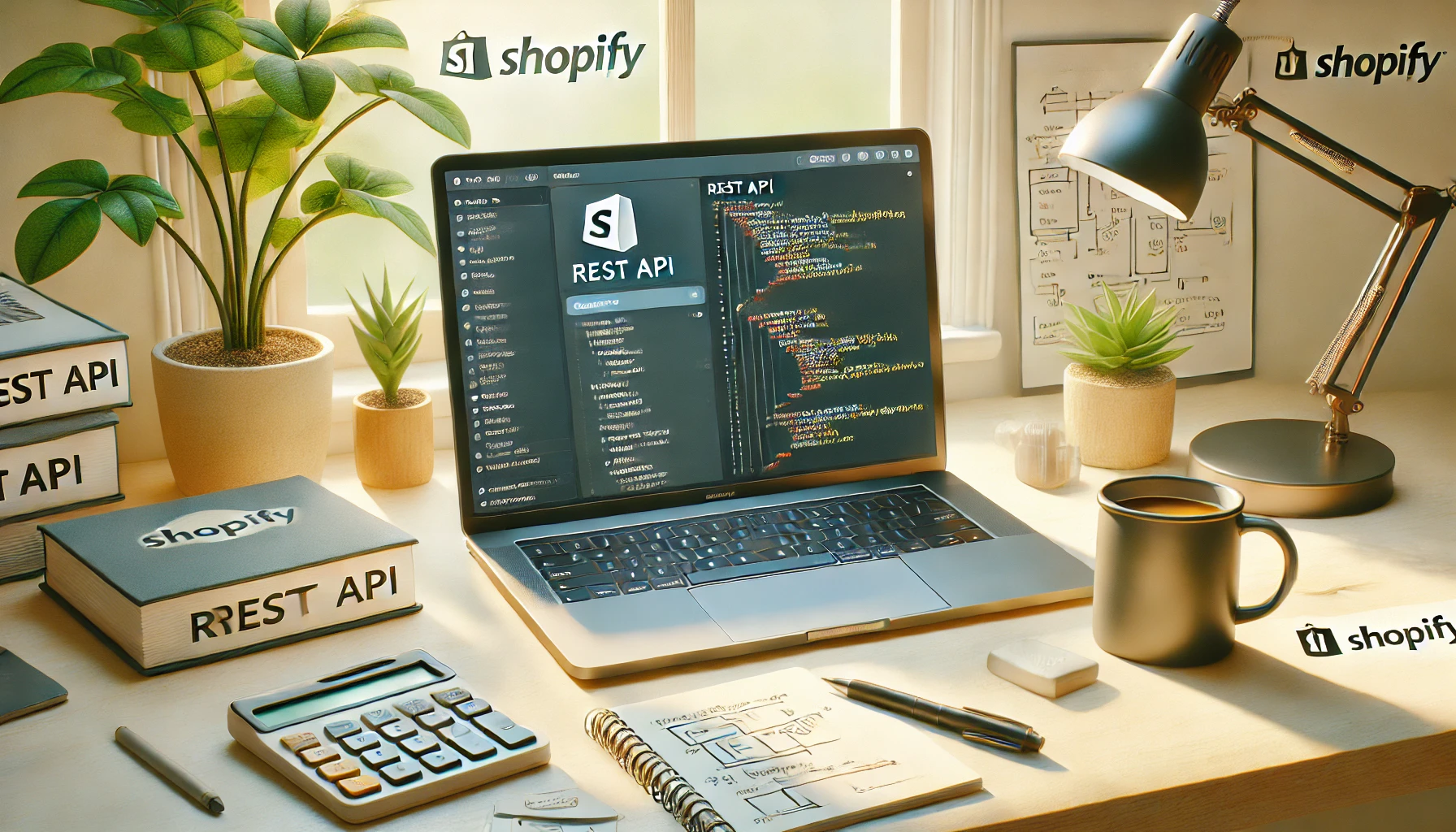Introduction
Developers and store owners alike recognize the power of Shopify’s REST API for creating custom apps and integrations. Combining this robust API with GitHub repositories can simplify workflows, optimize store management, and boost performance. This blog explores a practical Shopify REST API GitHub example, providing actionable insights for seamless implementation.
Whether you’re a developer starting your first integration or an experienced pro looking to fine-tune your setup, this guide covers the essentials to help you succeed.

Why Use Shopify REST API with GitHub?
1. Simplified Collaboration
GitHub offers version control, enabling teams to collaborate on app development and store customization effectively.
2. Faster Development
Using pre-built examples from GitHub repositories eliminates redundant work, allowing developers to focus on core functionality.
3. Customization Freedom
Shopify’s REST API gives access to essential resources like orders, products, and customers, offering unmatched flexibility to create tailored solutions.
4. Leverage Open-Source Resources
GitHub hosts a wealth of open-source repositories that demonstrate how to use Shopify’s REST API effectively, speeding up your learning curve.
Getting Started with Shopify REST API and GitHub
Step 1: Create Your Shopify App
- Log in to your Shopify Partner account.
- Navigate to Apps and click Create App.
- Configure permissions to ensure your app can access the required API scopes.
Step 2: Install GitHub and Clone a Repository
- Install Git on your development environment.
- Clone an example repository from GitHub. For example, the
Shopify-node-api-examplerepo offers excellent boilerplate code:
bashCopyEditgit clone https://github.com/Shopify/shopify-node-api-example.git
Step 3: Authenticate Your API Calls
Configure your app with API credentials from Shopify:
- Obtain your API Key and API Secret from the Shopify Partner dashboard.
- Add them to your app’s
.envfile:plaintextCopyEditSHOPIFY_API_KEY=your_api_key SHOPIFY_API_SECRET=your_api_secret
Step 4: Start Querying the Shopify REST API
Using libraries like Axios or Fetch, make API requests. For example, retrieve all products:
javascriptCopyEditconst axios = require('axios');
const fetchProducts = async () => {
const url = 'https://your-store.myshopify.com/admin/api/2023-01/products.json';
const headers = {
'X-Shopify-Access-Token': 'your_access_token',
};
const response = await axios.get(url, { headers });
console.log(response.data.products);
};
fetchProducts();
Shopify REST API GitHub Example in Action
Let’s dive into a practical example. Assume you’re building an app that syncs inventory across multiple Shopify stores. GitHub has repositories like Shopify Multi-Store Inventory Sync (hypothetical) that can serve as a starting point.
Steps in the Example Workflow
- Authenticate Each Store: Use OAuth to connect multiple stores to your app.
- Retrieve Inventory Levels: Query the
/inventory_levels.jsonendpoint. - Sync Updates Across Stores: Use the
/inventory_levels/set.jsonendpoint to push updates to connected stores.
Sample Code Snippet
javascriptCopyEditconst syncInventory = async (sourceStore, targetStores, inventoryItemId, quantity) => {
// Fetch inventory details from source store
const response = await axios.get(`${sourceStore}/admin/api/2023-01/inventory_levels.json`, {
params: { inventory_item_ids: inventoryItemId },
headers: { 'X-Shopify-Access-Token': sourceStoreAccessToken },
});
// Update inventory levels in target stores
for (const targetStore of targetStores) {
await axios.post(`${targetStore}/admin/api/2023-01/inventory_levels/set.json`, {
location_id: targetStoreLocationId,
inventory_item_id: inventoryItemId,
available: quantity,
}, {
headers: { 'X-Shopify-Access-Token': targetStoreAccessToken },
});
}
};
Frequently Asked Questions
1. What’s the difference between REST and GraphQL APIs in Shopify?
The REST API is resource-based and simpler for beginners, while GraphQL is query-based, offering more flexibility and efficiency.
2. Can I find free Shopify REST API examples on GitHub?
Yes! Many repositories offer free examples, including Xebrand Shopify Section, which provides pre-built Shopify sections for easy customization.
3. How do I handle API rate limits?
Shopify’s REST API allows 40 calls per second. Implement retry mechanisms and optimize requests to stay within limits.
4. Is the Shopify REST API secure?
Yes, as long as you use HTTPS, store access tokens securely, and validate webhook requests.
Pro Tips for Success
1. Leverage GitHub Issues and Discussions
Use these features to find solutions to common problems or ask questions within the developer community.
2. Use Pre-Built Sections
Save time by incorporating resources like Xebrand Shopify Section, which provides free, pre-built Shopify sections for easy integration.
3. Monitor API Changes
Shopify updates its API regularly. Subscribe to their developer changelog to stay informed.
Conclusion
The Shopify REST API combined with GitHub examples offers a powerful toolkit for developers. By leveraging open-source resources, understanding API workflows, and following best practices, you can create custom solutions that enhance your store’s functionality and performance.
Ready to get started? Explore GitHub repositories today and take your Shopify development to the next level!

Leave a Reply